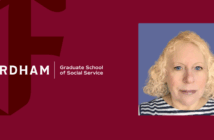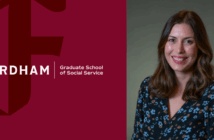According to the New York City Department for the Aging (DFTA), New York City is rapidly aging and the need for services for this population has grown exponentially (2012). In 2010, older adults (60 years and older) in New York City numbered 1,407,635, representing 17.2% of the City’s population. Approximately 30% of persons 60 and over are between ages 60 and 64, one-in-three are 75 and over, and one-in-ten are 85 and over. The older population 60 plus has been growing faster (12.4%) than both the City’s total population (2.1%) and population under 60 (0.2%). The City’s elderly population continues getting older, with those 85 and over growing rapidly at 16.2%. Moreover, there has been a dramatic increase among the young elderly ages 60 to 64 (31.9%) due to the influx of baby boomers (those born between 1946 and 1960) (DFTA, 2012)
For almost 75 years, senior centers have played a critical role in the lives of older adults living in New York City. The first senior center in the U.S., the William Hodson Senior Center, was established in 1943 in New York City. Since their inception, senior centers have evolved into community focal points of service delivery to community-dwelling older adults. There are an estimated 11,000 senior centers across the nation. New York City has approximately 280 senior centers serving the needs of approximately 27,000 older adults annually. Senior centers play a vital role in supporting community-dwelling older adults by offering a diverse array of recreational, nutritional, health and social service programs. This vast network of senior centers is publicly funded and the services are offered at no-cost to anyone ages 60 and older. They are critical components on the aging continuum of care, allowing older adults to live with dignity, optimal health and greater independence for the longest extent possible. For many seniors, senior centers are not only the main source of nutritious meals, but they also provide vital information, education and service linkages. Above all they are an avenue for socialization that enables older adults to make friends, avoid isolation and enhance their own mental and emotional health.
Therefore it is highly distressing to hear that the future of New York City’s senior centers is at serious risk. The proposed 2017-2018 New York State budget has proposed modifications in the use of Federal Title XX grants. This would cause New York City to lose nearly $17 million in support for senior centers, forcing 65 senior centers to be shut down. This represents almost 30% of the city’s senior centers and would result in 6,000 seniors losing complete access to vital community-based services (LiveOn NY, 2017).
Senior centers in New York City are particularly noted for serving the most vulnerable older adults. A study conducted by this author in collaboration with Liveon NYC, an advocacy organization for aging services and older adults, found that the average senior center consumer is a woman, with an annual income below $18,000, living alone with limited options for community-based services (Pardasani, 2009). This study also showed that for most consumers, senior centers are the only source of nutrition, social services, education and socialization within their communities (Pardasani, 2009).
With 463,000 older immigrant residents, New York has by far the largest foreign-born senior population of any city in the U.S Center for an Urban Future, 2013). Currently the poverty rate of people ages 60 and over is at 19.1% (Travers, 2015). 33.6% of persons age 65 and over and nearly one-half (46.8) of persons 85 and older in New York City were living alone (DFTA, 2015). These are the faces of older adults most likely to be adversely impacted by the closing of senior centers.
Frequently, the relevance and impact of senior centers in the lives of older adults is questioned by legislators and policy makers. They cite the lack of reliable data that could be used to support the cause of senior centers. Few such studies exist in the U.S. However, this author in conjunction with a colleague (Dr. Cathy Berkman) at Fordham University completed data collection on a 2-year longitudinal study that evaluated the impact of senior center participation on the lives of older adults. This study was proposed by the New York City Department for the Aging and jointly funded by the New York Community Trustand Fan Fox and Leslie Samuels Foundation. Preliminary data analyses showed that those who attended senior centers regularly reported improved physical and mental health, increased participation in health programs, frequent exercising, positive behavior change in monitoring weight and keeping physically active. Participation in a senior center also helped to reduce social isolation (Pardasani & Berkman, 2016). Participants experienced improved physical and mental health not only in the time period after joining a senior centers, but maintained or even continued to improve even one year later. This is a very important finding, given the decline in health and social activity in this age group, especially among those with low income. Maintenance of health and social activity, rather than a decline in health, is a major benefit of senior centers (Pardasani & Berkman, 2016).
Given the vital role that senior centers play in the lives of New York City’s older adults and the irreparable harm that the closing of nearly 65 of them will cause to this vulnerable population, we cannot let this happen. As a former senior center administrator and a current researcher/advocate for senior centers, this issue has a personal meaning for me. At the Graduate School of Social Service at Fordham University, promoting the health, well-being, safety and dignity of all human beings is a vital part of our mission. As a member of this university, I hope to use my research and policy advocacy to further the rights of all older adults, especially the most vulnerable and marginalized members. We cannot and must not stay silent! Please join me in writing to your State and City representatives to help preserve this critical service network.
Manoj Pardasani, LCSW, PhD Senior Associate Dean & Associate Professor Fordham University GSS 113 West 60th Street New York, NY 10023 mpardasani@fordham.edu


